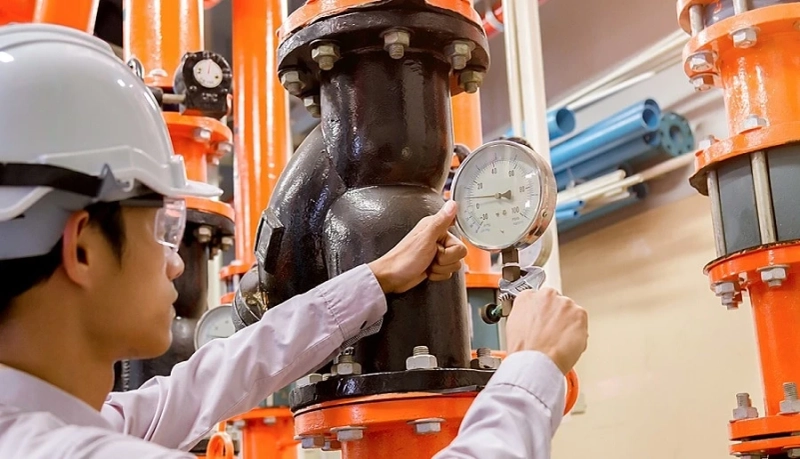What is fire load?
Fire load is referred to as the amount of heat liberated per unit area when a building and its contents are completely burnt or it is the number of combustibles, which are responsible for the heat flux in a compartment. Fire load is a way of avoiding a high potential severity of a hypothetical future fire. It is necessary that all buildings have the suitable fire precautions by grading according to their fire hazard. This grading of buildings on the basis of fire load and fire resistance is utmost significant to make sure that the occupancies/building are safe from any kind of fire emergency. Therefore, there is a classification of buildings based on occupancies:
Classification of building based on occupancy.
Group A Residential: It refers to buildings in which sleeping accommodation is provided for normal residential purposes with cooking or dining or both facilities, except any building classified under group C. For example- a lodge, one-or-two-family private dwelling, dormitories, etc.Group B Educational: Any building used for schools, college, universities, play school or day-care centres not included in Group D.Group C Institutional: These include any building used for medical or other treatment both physically and mentally, care of infants, aged people. These generally provide accommodation for occupants. For example- hospitals and sanatoria, orphanages, aged and infirm, jails, metal sanatoria, etc. Group D Assembly: includes where groups of people gather for amusement, recreation, social, religious, patriotic, civil, travel and other purposes. For example- auditorium, exhibition halls, museums, gyms, club room, etc. Group E business: It refers to a part of the building which is used for transaction of business for keeping accounts and records and similar purposes, professional establishments, service facilitates, etc. For example- offices, banks, laboratories, computer instalments, etc. Group F Mercantile: These include any building which is used as shops, stores, market, for display and sale of merchandise, either wholesale or retail.Group G Industrial: Includes where products or materials of all kinds and properties are fabricated, assembled, manufactured or processed. For example- assembly plants, laboratories, gas plants, dairies, refineries, etc. Group H Storage: Used primarily for the storage or sheltering of good or merchandise that are highly combustible, vehicles for animals. For example- warehouses, cold storage, storehouses, etc. Group J Hazardous: It involves buildings or part of a building which is used for handling, storing, and manufacture of explosive materials which may produce poisonous fumes.Fire load calculation formula
It provides a crux of fire assessment, intensity and probable fire duration. The fire intensity and duration that depend upon this fire load and heat release rate is again related to the composition of the fire load and its exposed surface, the fresh air supply.
qc= ∑ mvHv / Af, where
qc= fire load
Af= Floor load
Mv= Total mass of the combustible material (Kg)
Hv= Calorific value of the combustible material (MJ/Kg)
Why is it important?
In order to characterize fires, fire risk assessment, that provides detail data on fire, fire load is extremely vital. Fire load survey or calculation of fire load is the direct way to collect associated data which may give a basis for planning the design of fire.
The pre-acquired statistical information of fire load is crucial for coming up with a building against fire. Fire accidents are typically ascertained in urban inhabitants’ region thanks to densely settled areas. To avoid such things, wise style of fireplace and preventive measures are needed. The availability of structural safety in buildings depends on the specification of loads based on the need or purpose of the building. You can learn more on this here
Why fire load calculation of buildings in on the rise?
It offers helpful data like the fireplace size, rate of smoke production, the doable fireplace setting, and alternative relevant information for hazard assessment. Most of the factors that manages the fire development at growth stage and developed stage are totally different.
In fact, a study by researchers at the Indian Institute of Technology, Gandhinagar within the year 2018 has warned that the fireplace load in modern-day buildings in India is three times bigger than what was in the 1990s. They found that average fire Load Energy Density (FLED), that characterises fire loads of these units, was found to be around 1400 Mega Joules per area unit, that is regarding thrice the common of 487 MJ/ sq. m. These results were found throughout a study conducted simply twenty years ago in Kanpur. The most expected temperatures within the initial one hour were additionally abundant within the previous study. Lastly, the number of fires in high-rise buildings is increasing from the past few years. It's necessary to gather basic data which will facilitate to develop the planning of fire for them. Since the planning of fireplace is tormented by several factors, it's better to induce additional data concerning the combustion on a sensible basis.
If you are looking for Fire load Calculation Service click


